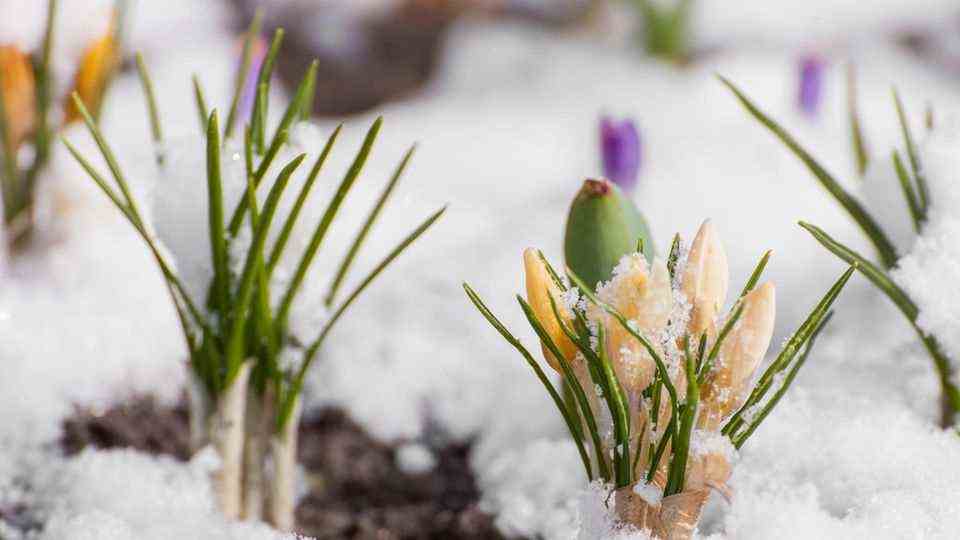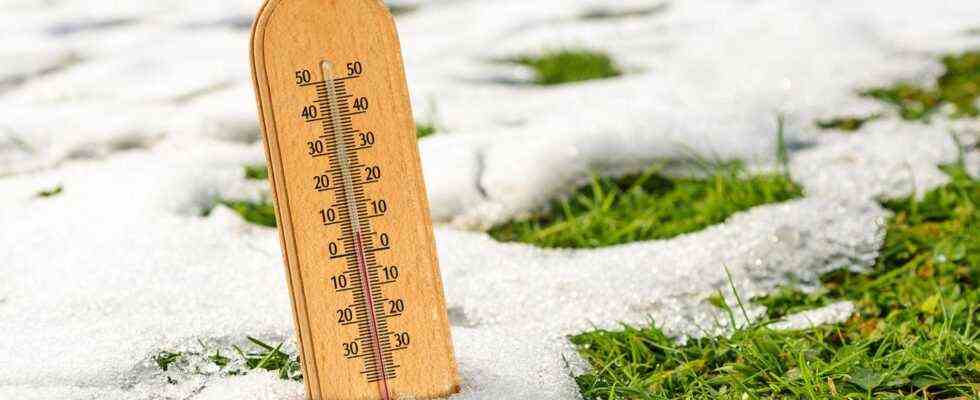Cold season
Make the garden winter-proof: this is how your plants survive frost, ice and snow
In just a few simple steps, your plants will get through the winter unscathed
© WDnet / Getty Images
Not only plants, but also garden furniture suffer from the prevailing weather conditions in winter. If you don’t want to experience any nasty surprises in spring, you should winterize your garden as soon as possible.
Even if winter does not reach its peak until the New Year, the falling temperatures are already causing problems for many gardeners: Sensitive plants such as roses and camellias, young trees or many hardy potted plants are particularly susceptible to frost damage and must be protected from the increasing cold . The same applies to sensitive garden furniture and rust-prone garden tools that should not be spent outdoors in winter – and if so, only with appropriate protection. The tips and tricks with which your garden survives the cold season unscathed are summarized below.
Garden checklist: key steps
1. The lawn
You should mow your lawn for the last time this year by the end of November at the latest – after that it no longer makes sense, as you may even harm it if it has to survive the winter when it is clipped too short. It is best to set your lawnmower higher so that your lawn can catch enough sunlight even in the cold season and does not offer uninvited guests such as moss any attack surface. And even if you think you will have to fertilize the grass again before the cold spell, experts advise you otherwise. Because the fact is: The nutrients can no longer be absorbed by the grass and therefore only end up in the groundwater. Before the actual onset of winter, you should also collect the remaining leaves so that the lawn gets enough light.
2. The plants
Most of the perennials in the garden survive the winter without any problems and do not even have to be cut back. However, this does not apply to sensitive plants such as roses: their cloudiness may only be shortened by a third to protect them from frost. Then you should protect them against the cold with bark mulch or spruce branches. Winter hardy potted plants, on the other hand, as the name suggests, can remain outdoors all year round – but you also need a little (frost) protection. With appropriate protective materials such as Bubble wrap, Garden fleece or Styrofoam sheets you can make the plants winter-proof: you wrap the plant with the foil, with the fleece you offer all-round protection and the styrofoam is pushed under the bucket. Then it is best to place the plants in a sheltered place, for example in front of the house wall. Non-hardy and Mediterranean potted plants should definitely overwinter in the basement or garage, otherwise yoursRoot balls could freeze to death.
3. Flower and vegetable beds

Even early bloomers such as crocuses can overwinter in the flowerbed
© v_zaitsev / Getty Images
Before you dispose of the last leaves, you can also use them to cover your beds – but first you should cut off any dead or withered plant remains. When there are no more leaves, you can cover your flower and vegetable beds with garden fleece. Fresh compost is even better, however: it can ripen over the winter and offers the plants an ideal breeding ground when they develop new shoots in spring. If you have an herb garden, you can also use fir or spruce branches to protect the herbs from the cold. If early bloomers (i.a. Crocuses, Tulips or Daffodils) are to overwinter in your flowerbed, you have to plant the tubers in the ground before the first frost. Then you usually get through the winter without any problems.
4. Trees and bushes
A rule of thumb is that trees and shrubs should be cut back in October. However, since the first real frost is still a long way off, you still have the option: By pruning branches that are too long, leafless, dead or sick branches and twigs from below, new shoots will grow back better and faster. In the case of fruit trees, it is important to cut off the old branches directly from the trunk – preferably always over younger shoots. If you want to cut back your hedge, you can thin out and shrink it properly. As soon as the first frost sets in, it is important not to prune your trees and bushes any more, as the interfaces will no longer close. With a Lime paint you can additionally protect young trees, alternatively one can also help Jute sheathing or one Reed mat against frost.
5. The garden pond

A hole in the frozen garden pond protects fish from suffocating
© mtreasure / Getty Images
In winter the fish retreat to the garden pond: More precisely, in the cold season they fall into a kind of winter rigidity so that their metabolism slows down and they can get by without food and little oxygen until the next spring. Normally the animals persist in the deeper water layers, so that they do not face any danger if the pond freezes in the upper layers. However, if the water freezes completely, the fish can suffocate in it. You can minimize the risk by having one over the winter Ice preventer, If necessary, place it on the surface of the water with circlips (in case of permafrost) – it ensures that the pond cannot freeze completely. This is made possible by a styrofoam ring, which has an insulating effect on the water.
6. The water connection
If you have an outside water connection in the garden, you should protect the pipes from the first frost by emptying them completely – otherwise there is a risk that residual water will freeze, i.e. expand and cause the pipes to burst. It is best to close the main valve to the outside pipes during the winter, then turn on the water tap in the garden so that the rest of the water can flow out. To make sure that there is no more water in the pipes, you can open the drain valve in the second step to catch the remaining water.
7. The garden tools
The devices must also be made winter-proof so that they do not rust. It’s not enough here mowing machine and Co. to simply store in a dry place – instead, the garden tools should be cleaned thoroughly before winter sets in. Important: Before removing loose waste such as leaves, grass and earth with your hands or with a small broom, disconnect electrical appliances from the power supply. The first rust stains, on the other hand, are fought with steel wool and resin stains with petroleum ether. Other frost protection measures can also be found in the corresponding manuals for the respective devices, if you still have them.
8. The garden furniture

Snow and ice damage a lot of garden furniture in winter
© PaulMaguire / Getty Images
Last but not least, the garden furniture must not be disregarded. Even if most of the materials are quite winter-proof, such as tables and chairs made of rattan or aluminum, they are permanently troubled by high temperatures below zero and also by exposure to the sun. It is best for the garden furniture to store it in a cool and dry place over the winter – as wood in particular does not particularly like too much heat when it spends the rest of the year in the garden. A cellar or garage are therefore the ideal places for your garden furniture to survive the winter unscathed. Alternatively, there is also a special one cover for outdoors, which is waterproof and also weatherproof.
You might also be interested in:
This article contains so-called affiliate links. Further information are available here.

